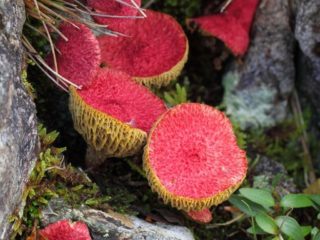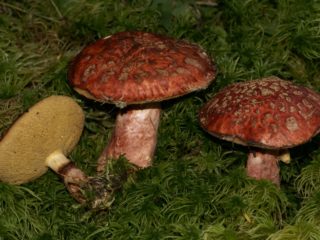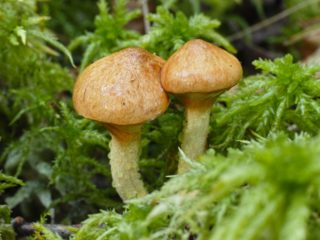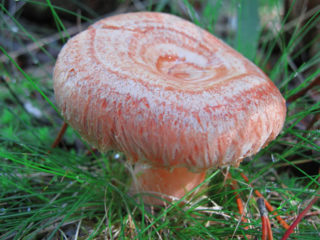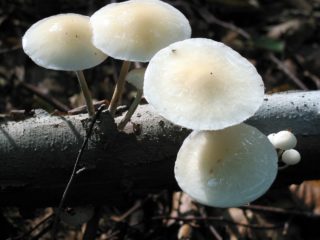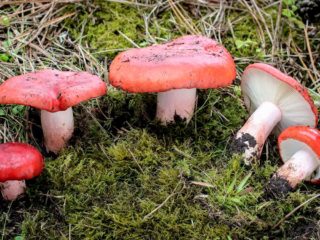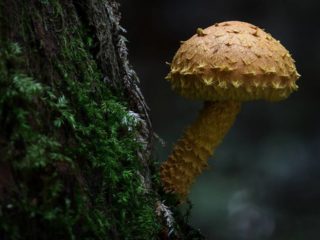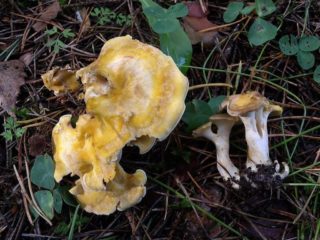Content
Asian Boletinus (Boletinus asiaticus) belongs to the Maslenkov family and the genus Boletinus. The mushroom has a memorable appearance and bright coloring. First described in 1867 by Karl Kalchbrenner, an Austro-Hungarian scientist and clergyman. Its other names:
- Asian grate or oiler;
- euryporus, from 1886, described by Lucien Quelet;
- Fuscoboletin, since 1962, was described by Rene Pomerleau, a Canadian mycologist.
Where does the asian boletus grow?
The mushroom is rare and protected by law. Distribution area: Siberia and the Far East. It is found in the Urals, in the Chelyabinsk region it can be seen in the Ilmensky Nature Reserve. It also grows in Kazakhstan, in Europe - in Finland, the Czech Republic, Slovakia, and Germany.
Asian boletin forms mycorrhiza with larch and is found in coniferous forests where it grows. In mountainous areas it prefers to settle in the lower parts of the slopes. The cause of extinction is uncontrolled deforestation. The mycelium bears fruit from mid-late summer to September. It grows on the forest floor, on rotting remains of trees, in small groups. Sometimes two or more fruiting bodies grow from one root, forming picturesque groups.
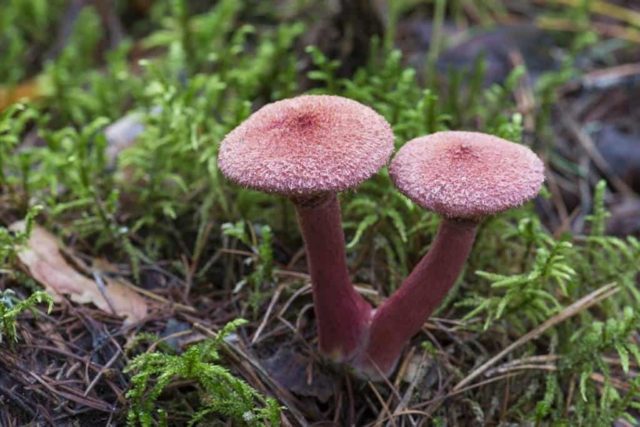
Pink furry caps are visible on the forest floor from afar
What does an Asian Boletin look like?
The Asian boletin adorns the forest with its mere presence. Its caps have a rich crimson, pinkish-crimson, wine or carmine color and are covered with scaly soft hair, which gives them the appearance of elegant shaggy umbrellas. The surface is dry, matte, velvety to the touch. The shape of young mushrooms is rounded toroidal, flat, with the edges tucked inward into a thick ridge. The hymenophore is covered with a dense snow-white or pinkish blanket, which stretches with age, becomes openwork and remains on the edges of the cap and a ring on the stalk.
As it grows, the cap straightens out, becoming umbrella-shaped, and then increasingly raising the edges, first to an outstretched shape, and then to a slightly concave, dish-shaped shape. The edge may have an ocher-yellowish narrow border with remnants of a spathe. The diameter varies from 2-6 to 8-12.5 cm.
The hymenophore is tubular, incremented and weakly descending along the stalk, rough. Can reach 1 cm in thickness.Color ranges from creamy yellow and lemon to beige, olive and milky cocoa. The pores are medium-sized, oval-elongated, located in distinct radial lines. The pulp is elastic, fleshy, whitish-yellow in color, the color does not change when broken, with a barely noticeable mushroom aroma. Over-aged foods may have an unpleasant fruity-bitter odor.
The leg is cylindrical, hollow inside, hard-fibrous, and may be curved. The surface is dry, with a distinct ring at the cap and longitudinal fibers. The color is uneven, lighter at the root, similar to the cap. Above the ring, the color of the stem changes to creamy yellow, lemon or light olive. The length is from 3 to 9 cm, and the diameter is 0.6-2.4 cm.
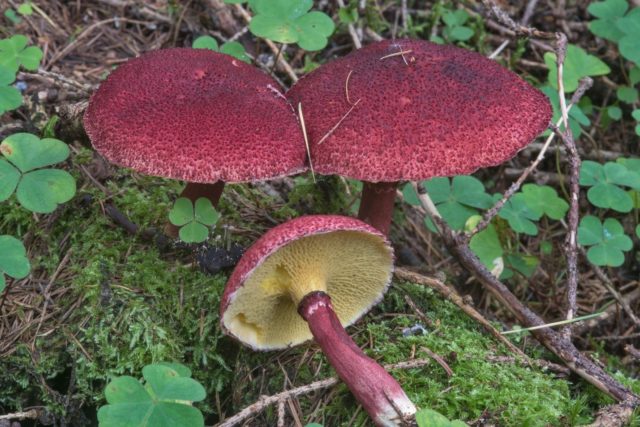
There is a noticeable thickening in the lower part of the leg
Is it possible to eat Asian boletin?
Asian Bolethin classified as conditionally edible mushrooms of III-IV categories due to the bitter taste of the pulp. Like all grates, it is used primarily for pickling and salting, as well as in dried form.
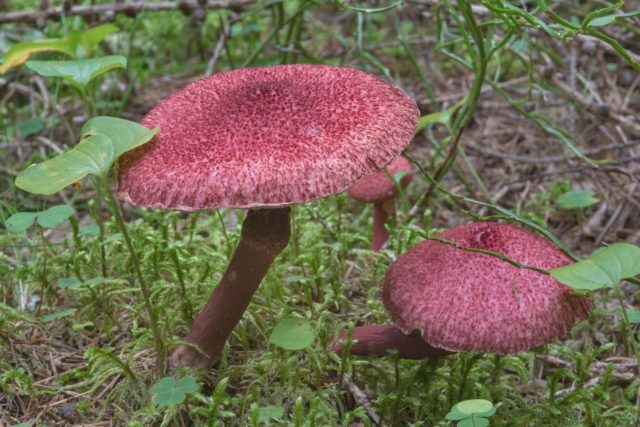
The mushroom has a hollow stem, so the caps are used for pickling.
Similar species
The Asian boletin is very similar to its own species and some varieties are oily.
Bolethin swamp. Conditionally edible. It is distinguished by a less pubescent cap, a dirty pinkish veil and a large-porous hymenophore.
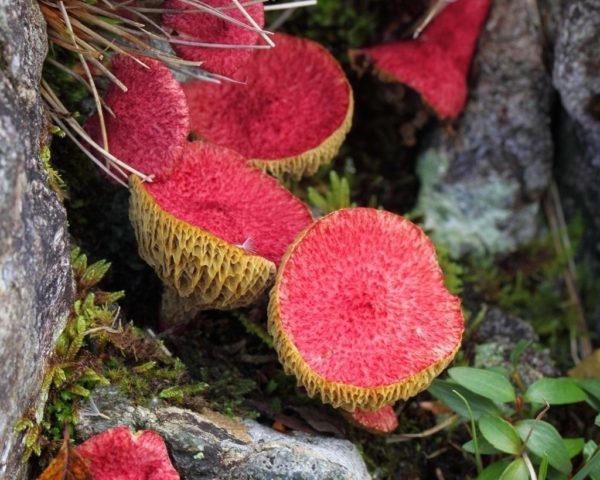
The pulp of the fruiting bodies is yellow, may acquire a bluish tint
Bolethin polozhkovy. Conditionally edible. It is distinguished by a chestnut color of the cap and a brownish-brown leg.
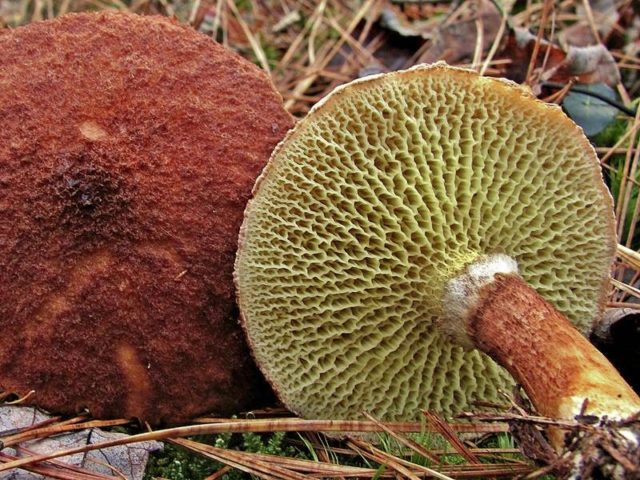
The hymenophore of these mushrooms is dirty olive, large-porous
Sprague's oiler. Edible. The hat is deep pink or brick red. Loves damp, marshy places.
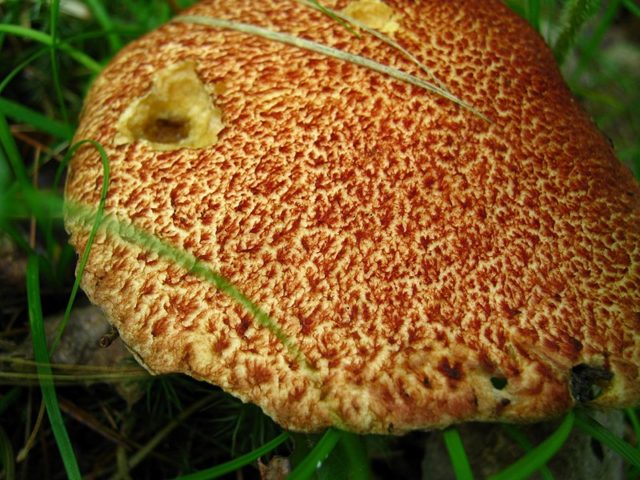
If the mushroom is broken, the flesh becomes rich red in color.
Collection and use
Asian boletin should be collected carefully so as not to damage the mycelium. Cut off the fruiting bodies with a sharp knife at the root, without disturbing the layer of forest waste. It is advisable to cover the cut areas with leaves and needles so that the mycelium does not dry out. Mushrooms are elastic, so they do not cause problems during transportation.
Being a conditionally edible mushroom, Asian bolethin requires a special approach when cooking. When fried or boiled, it is bitter, so it is best used for preservation for the winter.
Sort out the collected fruiting bodies, clean them of forest debris and remnants of blankets. The hollow stems have low nutritional value, so in cooking they are used only in dried form for mushroom flour.
Preparation procedure:
- Cut off the stems, place the caps in an enamel or glass container and fill with cold water.
- Soak for 2-3 days, changing the water at least 2 times a day.
- Rinse well, add salted water with the addition of 5 g of citric acid or 50 ml of table vinegar.
- Cook over low heat for 20 minutes.
Place on a sieve and rinse. Asian boletin is ready for marinating.
Marinated Asian Boletin
Using your favorite spices, Asian Boletin makes a wonderful appetizer.
Required Products:
- mushrooms – 2.5 kg;
- water – 1 l;
- garlic – 10 g;
- salt – 35 g;
- sugar – 20 g;
- table vinegar – 80-100 ml;
- dried barberry berries – 10-15 pcs.;
- mixture of peppers to taste – 5-10 pcs.;
- bay leaf – 3-4 pcs.
Cooking method:
- Prepare a marinade from water, salt, sugar and spices, boil, pour in 9% vinegar.
- Add mushrooms, cook for 5 minutes.
- Place tightly in a prepared glass container, adding marinade. You can pour 1 tbsp on top. l. any vegetable oil.
- Seal tightly, wrap and leave for a day.
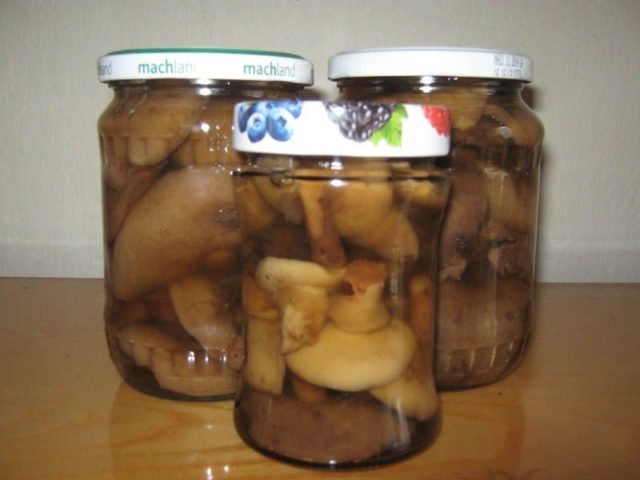
Store prepared pickled mushrooms in a cool, dark place for no more than 6 months.
Conclusion
Asian bolethin is an edible sponge mushroom, a close relative of the boletus. Very beautiful and rare, included in the list of endangered species of the Russian Federation. It grows exclusively next to larches, so its distribution area is limited. Found in Russia, Asia and Europe. Since Asian boletin has a bitter pulp, it is used in cooking in dried and canned form. It has edible and conditionally edible counterparts.
